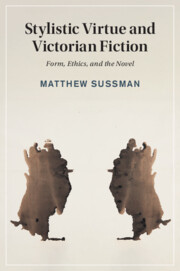Book contents
- Stylistic Virtue and Victorian Fiction
- Cambridge Studies In Nineteenth-Century Literature And Culture
- Stylistic Virtue and Victorian Fiction
- Copyright page
- Contents
- Illustrations
- Acknowledgments
- Introduction What Is Stylistic Virtue?
- Chapter 1 Stylistic Virtue and the Rise of Literary Formalism
- Chapter 2 Stylistic Virtue between Moralism and Aestheticism
- Chapter 3 Virtue Theory and the Nature of the Aesthetic
- Chapter 4 Thackeray’s Grace
- Chapter 5 Trollope’s Ease and Lucidity
- Chapter 6 Meredith’s Fervidness
- Afterword Stylistic Virtue and Literary Value
- Notes
- Bibliography
- Index
- Cambridge Studies In Nineteenth-Century Literature And Culture
Chapter 4 - Thackeray’s Grace
Published online by Cambridge University Press: 11 June 2021
- Stylistic Virtue and Victorian Fiction
- Cambridge Studies In Nineteenth-Century Literature And Culture
- Stylistic Virtue and Victorian Fiction
- Copyright page
- Contents
- Illustrations
- Acknowledgments
- Introduction What Is Stylistic Virtue?
- Chapter 1 Stylistic Virtue and the Rise of Literary Formalism
- Chapter 2 Stylistic Virtue between Moralism and Aestheticism
- Chapter 3 Virtue Theory and the Nature of the Aesthetic
- Chapter 4 Thackeray’s Grace
- Chapter 5 Trollope’s Ease and Lucidity
- Chapter 6 Meredith’s Fervidness
- Afterword Stylistic Virtue and Literary Value
- Notes
- Bibliography
- Index
- Cambridge Studies In Nineteenth-Century Literature And Culture
Summary
The second half of the book turns to the novels of Thackeray, Trollope, and Meredith to demonstrate how stylistic virtues offer an historicized hermeneutic that can change our understanding of texts and Victorian prose forms. It begins with William Makepeace Thackeray because he was considered by many to be the period’s most capable stylist, though few understand this assessment today. The fault lies in part with the traditions of Thackerayan criticism. Obsessed with the quality of his narrative voice, many have focused on Thackeray’s unity (or disunity) of tone, leading to dubious interpretations of key early works. By rethinking these interpretations, which stem from thematically oriented criticism, Chapter 4 shows that there is a difference between Thackeray’s satirical personality and the protean adaptability of his stylistic guises. The consequence for readers of major works like Pendennis or The Newcomes is a hyper-awareness of “grace,” a form of stylistic versatility and detachment that exists in productive tension with the author’s other ethical attitudes.
Keywords
- Type
- Chapter
- Information
- Stylistic Virtue and Victorian FictionForm, Ethics, and the Novel, pp. 96 - 123Publisher: Cambridge University PressPrint publication year: 2021

